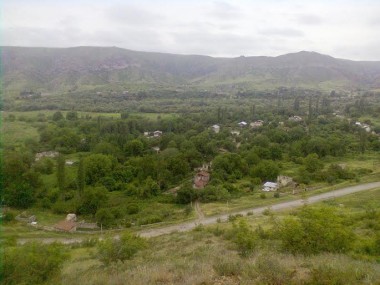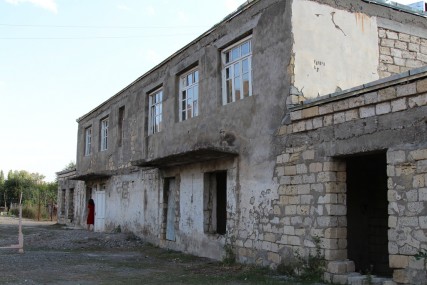Vurgavan: story of the liberated and struggling village
The village of Vurgavan is in the south of Artsakh’s Kashatagh region, about 40km south of Berdzor. The village was liberated in 1993 during the Artsakh liberation war. When I first heard the name Vurgavan, a question popped up: why Vurgavan, where does that name come from?

The inhabitants of Vurgavant say that their village is the first settlement visited by a freedom fighter from Sisian named Vurg Voskanian, who then has moved up north and fallen in battle near the village of Vakunis. After Vurg’s visit people have started calling this village Vurgavan. At that time several freedom fighters and their families have resettled this village and become its first inhabitants.
Inhabitants of Vurgavan
The village started to be settled in 1994 as people moved here from Stepanakert, Gyumri and other towns of Armenia. The life for the first settlers was really hard: their houses were ruined, there was no electricity, no roads; in a word, there was nothing. There was only one realization: this sacred part of the motherland was liberated by the Armenian soldiers, and it needed to be protected at all cost. And they did it; they continued the work of the freedom fighters. Over the years some critically important issues have been resolved. Currently, 157 people live in Vurgavan. A few years ago there were 36 families in the village, now the number has reached 40. This means that new settlers, though few in numbers, continue to move to Vurgavan. Gueorgui Khachatryan, the village mayor, says that many people want to move to the village, but there are not many jobs in the village, which is the main reason why new settlers do not resettle here.
Challenges overcome
The experience of those inhabitants of Vurgavan who can now stand strong was not an easy one in this liberated land. In 2007 the economy of the village was hit by a shock: the entire herd of cattle in the village, about 200 cows, contracted brucellosis, a deadly viral disease, and had to be killed. The compensation was meagre, inflicting huge financial losses on the villagers. Despite this serious hit, no one left the village. Every resident stayed and tried to overcome the crisis. Today, 8 years later, the villagers have managed to increase the herd back to 150 cows. The villagers are mainly engaged in cattle-herding and growing grain. The climate also allows the establishment of large-scale fruit orchards. They have also found the market to sell their products: fruits and vegetables are mainly sent to both the Republic of Armenia and Stepanakert.
Resurgent Vurgavan with hope for future

According to the village mayor the whole village is in excitement. It is due to the ongoing construction. Vurgavan’s school is half-ruined and humid, which is dangerous for both the children and the teachers. There is neither a health clinic, nor a village administration center in Vurgavan. This summer the Hayrenaser Organization will fully reconstruct the school and build a new health clinic and a new village administration center. The inside of the school will also be repartitioned and reconfigured, which will optimize the use of space and increase the capacity to accommodate a higher number of students. This is necessary, since the number of children in Vurgavan is growing. The school will also house a newly-built gym/event hall. For over 20 years the inhabitants of Vurgavan have lived and overcome difficulties. Through their presence they are protecting the liberated motherland. In the early years they have lived without the bare necessities, the most basic infrastructure. But they have not given up and left, thus allowing the settlement to survive. Today Vurgavan transitions from merely surviving to growing and developing. Hayrenaser’s building of the health clinic, village administration centre and the complete reconstruction of the school will greatly contribute to the development of the village, giving the community the hope of a better tomorrow.
Tamara Grigoryan
Hayrenaser Organization

 Հայերեն
Հայերեն